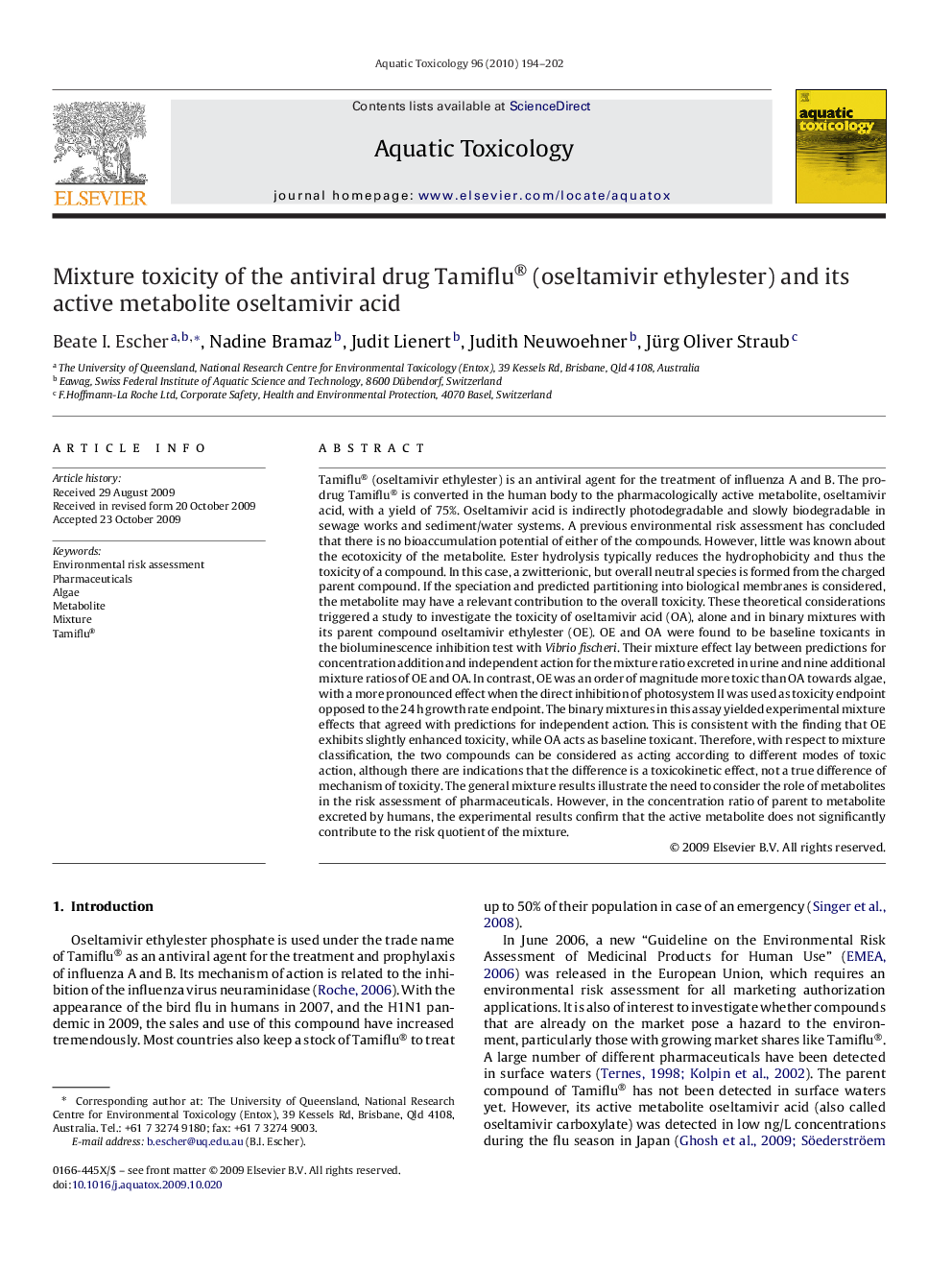| کد مقاله | کد نشریه | سال انتشار | مقاله انگلیسی | نسخه تمام متن |
|---|---|---|---|---|
| 4530217 | 1324689 | 2010 | 9 صفحه PDF | دانلود رایگان |

Tamiflu® (oseltamivir ethylester) is an antiviral agent for the treatment of influenza A and B. The pro-drug Tamiflu® is converted in the human body to the pharmacologically active metabolite, oseltamivir acid, with a yield of 75%. Oseltamivir acid is indirectly photodegradable and slowly biodegradable in sewage works and sediment/water systems. A previous environmental risk assessment has concluded that there is no bioaccumulation potential of either of the compounds. However, little was known about the ecotoxicity of the metabolite. Ester hydrolysis typically reduces the hydrophobicity and thus the toxicity of a compound. In this case, a zwitterionic, but overall neutral species is formed from the charged parent compound. If the speciation and predicted partitioning into biological membranes is considered, the metabolite may have a relevant contribution to the overall toxicity. These theoretical considerations triggered a study to investigate the toxicity of oseltamivir acid (OA), alone and in binary mixtures with its parent compound oseltamivir ethylester (OE). OE and OA were found to be baseline toxicants in the bioluminescence inhibition test with Vibrio fischeri. Their mixture effect lay between predictions for concentration addition and independent action for the mixture ratio excreted in urine and nine additional mixture ratios of OE and OA. In contrast, OE was an order of magnitude more toxic than OA towards algae, with a more pronounced effect when the direct inhibition of photosystem II was used as toxicity endpoint opposed to the 24 h growth rate endpoint. The binary mixtures in this assay yielded experimental mixture effects that agreed with predictions for independent action. This is consistent with the finding that OE exhibits slightly enhanced toxicity, while OA acts as baseline toxicant. Therefore, with respect to mixture classification, the two compounds can be considered as acting according to different modes of toxic action, although there are indications that the difference is a toxicokinetic effect, not a true difference of mechanism of toxicity. The general mixture results illustrate the need to consider the role of metabolites in the risk assessment of pharmaceuticals. However, in the concentration ratio of parent to metabolite excreted by humans, the experimental results confirm that the active metabolite does not significantly contribute to the risk quotient of the mixture.
Journal: Aquatic Toxicology - Volume 96, Issue 3, 18 February 2010, Pages 194–202